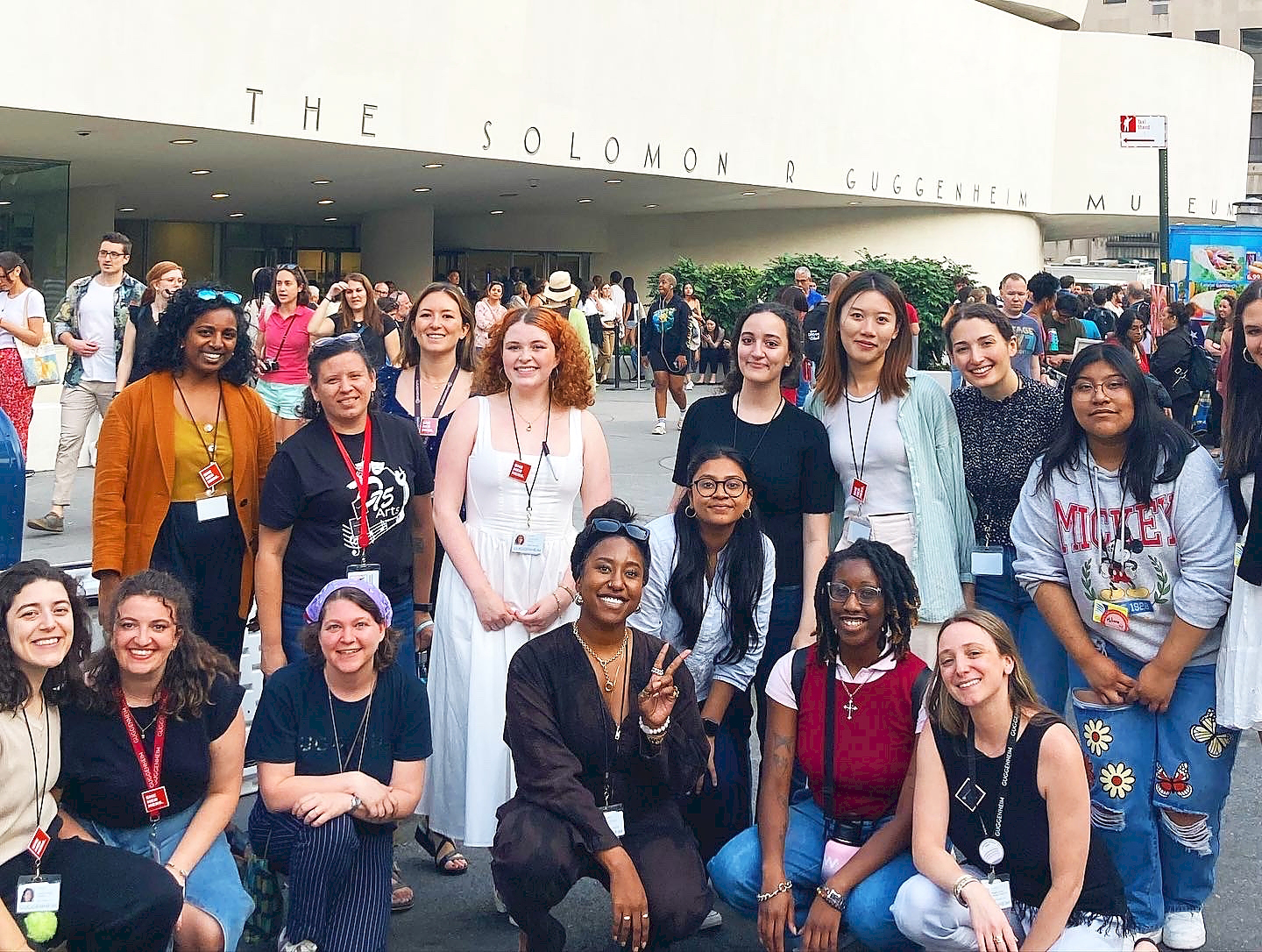#Whitney #McGuire #Antiques #Arts #Weekly

Courtesy Whitney McGuire.
This past February, the Guggenheim Museum, New York appointed Whitney McGuire as associate director of sustainability, through the generous support of the JPB Foundation. In this new, full-time role, McGuire aims to bolster the implementation of a sustainability plan through collaboration and cross-disciplinary dialogue with the institution’s various departments. It’s no small undertaking, so Antiques and The Arts Weekly reached out to McGuire to get a primer on what’s involved.
Tell us a bit about your background that prepared you for your current role.
Before joining the Guggenheim, I practiced law for 10 years with a focus on the art and fashion industries. I became a subject matter expert in the field of sustainability as a founder of Sustainable Brooklyn, a community-based consultancy and think tank dedicated to concretizing equity within the sustainability movement; and as a part-time faculty member at Parsons School of Design in New York City.
How do you write a sustainability plan for a museum?
Writing a comprehensive sustainability plan requires flexibility, patience and time. In my role, I build upon the three years of foundation work from the museum’s cross-departmental Green Team and develop strategies to embed these sustainability efforts throughout the institution. I work on day-to-day practices, meet with stakeholders, conduct material impact assessments and evaluate urgency in different areas against the capacity of our budget and staff. The plan requires various phases that are dictated by our priorities and capacity. Within each phase, I outline specific objectives and expected outcomes with the input of staff and Green Team Leaders.
Why is sustainability important to the Guggenheim?
Cultural institutions are uniquely positioned to influence change in people, our communities and the world. While we recognize the impact of art museums on the environment — our very existence depends on the movement of objects and people — we remain adaptable and accountable as we endeavor to develop solutions and understand our place in creating a greener path forward.

Courtesy of the Guggenheim New York.
The Guggenheim’s mission statement says the institution “is committed to a future-focused, comprehensive and adaptive approach to sustainability, embedded in strategy, operations and culture across the institution.” Can you break that down for us?
We develop and advance both department-specific and cross-departmental sustainability goals, with a focus on collaboration where possible. As I build success metrics for this associate director of sustainability role, one clearly identifiable metric is the mindset shift of navigating away from thinking of this work as “work,” rather, this is collectively our responsibility as stakeholders in this institution. Embedding a sustainability mindset into institutional decision-making requires more questions than answers. There is no set formula for tackling the climate crisis, so we take an interactive approach that is intersectional, cross-departmental, judgment-free, humble and urgent. Our Green Team created sustainability principles that function like a framework upon which we can build throughout the institution.
These principles are as follows:
Question everything.
Foster collaboration.
Consider timing.
Think forward.
Track progress.
Educate and illuminate.
We collaborate with organizations like the Gallery Climate Coalition, of which we are a founding member; Bizot Climate Protocol, to adjust our climate control parameters and track our carbon footprint; our retail partner, Event Network; our food vendor, Restaurant Associates; and we work with other museums to exchange learnings and opportunities, including the museums in our Guggenheim constellation.
We have been successful in breaking the climate silence and turning more pessimistic views of the climate crisis into more optimistic courses of action.
Who is on the “Green Team” and what are their respective roles?
The “Green Team” comprises museum staff from across 25 departments. Over the last three years, the team carried out a holistic, iterative and collective strategy developed by consultant Alexa Steiner, founder of Rute Collaborative, to address systemic challenges and to incorporate sustainability into institutional practices. Green Team members work individually and in cross-departmental groups to develop and track goals, then the broader team meets monthly to report progress and project outcomes, present new ideas and discuss upcoming efforts.

Museum mile, Green Team program. Courtesy Whitney McGuire.
Did you come to the Guggenheim with any best practices from other museums to emulate?
My background is in fashion, education and law. What I’ve been able to apply from these sectors is the importance of collaboration and accountability. We cannot tackle the climate crisis in siloes, so collaboration is the key to successful outcomes.
Are the New York museum’s sustainable practices embeddable for the museums in Venice, Bilbao and Abu Dhabi?
The Guggenheim constellation of museums share a collaborative commitment to environmental, social and cultural sustainability. Each museum possesses different strengths, and we continuously learn from each other’s processes and implementations, but our collective goal is the same.
Areas of investigation and experimentation include exhibition design and logistics, travel, our physical spaces, programming and education, shared policies and community impact and engagement. We are assessing current operations, exploring ways to lower emissions, reducing waste and coordinating efforts across the constellation. We are working together, as members of the cultural sector and our local communities, to innovate in the pursuit of real solutions to complex problems. We are examining methods of becoming more environmentally conscious in daily practices and exhibition making, and construct the necessary internal infrastructure to support these efforts.

Courtesy of the Guggenheim New York.
How do the concepts of DEAI and sustainability relate to one another?
DEAI and sustainability are closely intertwined. I am part of the DEAI committee and meet regularly with our chief culture and inclusion officer. We both recognize that a greener path forward encompasses a reconciliation within museum processes and an understanding of the communities that continue to be first and most impacted by systemic environmental and social injustices. This is why our commitment to diversity, equity, access and inclusion is vital to mitigating the impacts of the climate crisis. Reflecting the plurality of our internal culture and our global audience is imperative to our sustainability mission and vision.
How do you plan to tell the story to your patrons through exhibitions & programs?
Even though I think it’s important for us to focus on our internal sustainability framework before we begin to tell the story to our patrons through exhibitions and programs, our programming has begun to reflect our sustainability mission quite well. For instance, one of the Guggenheim Education department’s sustainability goals has been to host programs that explore sustainability topics and inspire new possibilities. They are focusing on encouraging young audiences, including GuggTeens, to become thought leaders in the field of sustainability, something that they are already very passionate about.
Our exhibitions-related departments are receiving climate impact training that I’ve organized to better equip them with knowledge to support thought leadership in sustainability. This is the first step to telling the story to patrons through exhibitions. We are invested in sustainably preserving our infrastructure and collections while challenging artists, the public and exhibitions-related departments to use art to inspire reimagined equitable futures and support positive climate impact. I look forward to the next chapters.
—W.A. Demers




